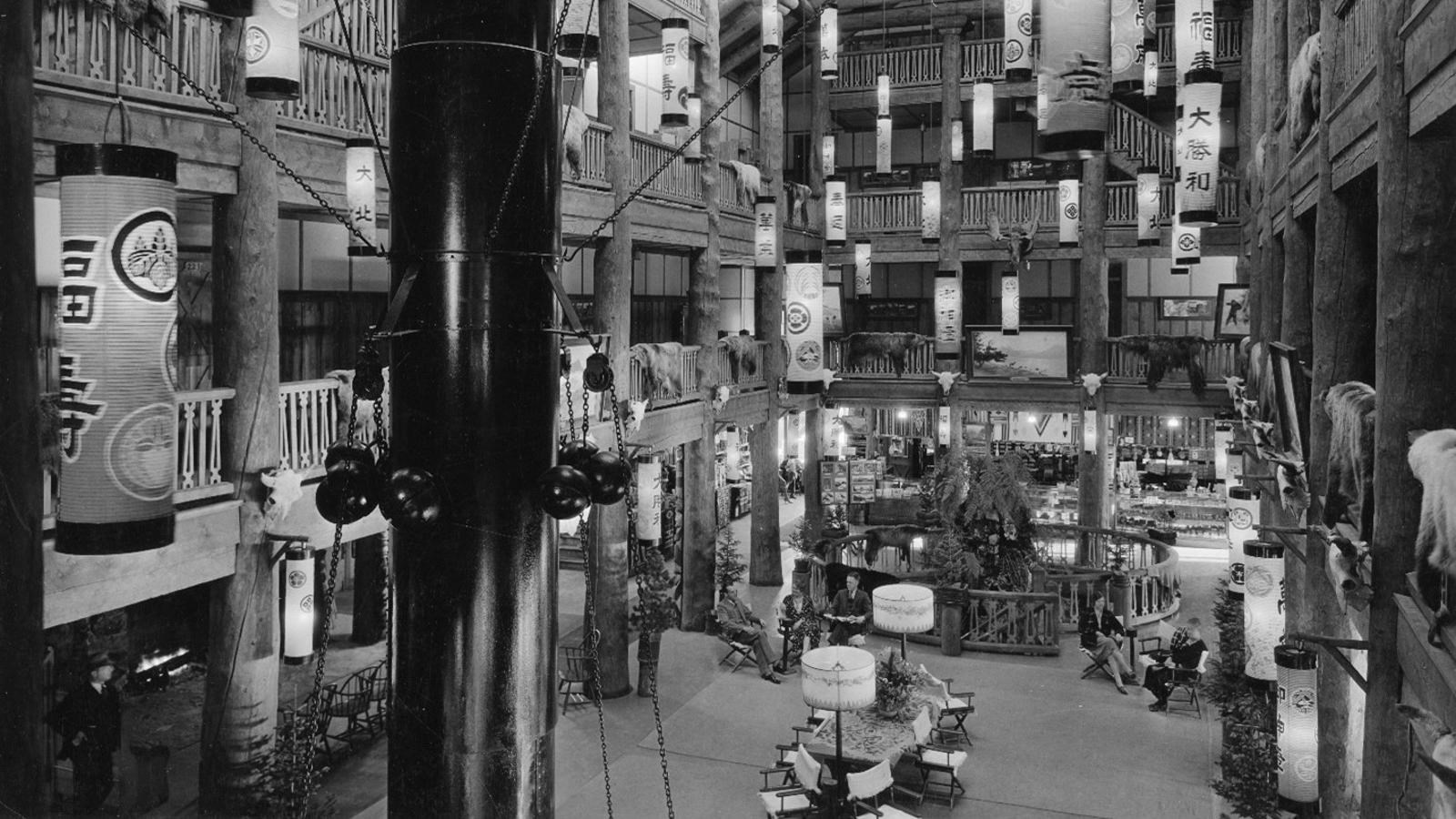Last updated: November 26, 2024
Place
Many Glacier Hotel Lobby

Hileman 1931
Quick Facts
Designation:
National Historic Landmark
Amenities
17 listed
Accessible Rooms, Automated Entrance, Benches/Seating, Food/Drink - Bar/Alcohol For Sale, Food/Drink - Coffee, Food/Drink - Restaurant/Table Service, Food/Drink - Snacks, Gifts/Souvenirs/Books, Historical/Interpretive Information/Exhibits, Information, Recycling, Restroom, Restroom - Seasonal, Theater/Auditorium, Toilet - Flush, Water - Drinking/Potable, Wheelchair Accessible
In the early years, guests arrived at the hotel on horseback using established trails or in touring cars via dirt roads. Upon arrival, they entered an eclectically decorated lobby. Blackfeet pictographs paid homage to the first caretakers of the land and their history in the valley. Animal pelts and skulls hung from balconies, giving the hotel a hunting lodge feel. Oriental lanterns and afternoon tea service reminded guests the Great Northern could also deliver them to Japan via luxury steam ships. And just to be sure guests didn’t forget where they were, picture windows on every wall made the outdoors almost close enough to touch.
The hotel is designed as a series of interconnected buildings that span nearly a quarter mile of lakeshore. Stand in the lobby and face the front desk. The long hallway to the left (north) leads to the Swiss Lounge and Ptarmigan Dining Room, the northernmost building in the design. To the right, a peaceful breezeway leads to the southernmost building, known as the annex. The annex was added in 1917. It completed Hill’s vision for his “Alps of America” experience in the Many Glacier Valley.
The hotel is designed as a series of interconnected buildings that span nearly a quarter mile of lakeshore. Stand in the lobby and face the front desk. The long hallway to the left (north) leads to the Swiss Lounge and Ptarmigan Dining Room, the northernmost building in the design. To the right, a peaceful breezeway leads to the southernmost building, known as the annex. The annex was added in 1917. It completed Hill’s vision for his “Alps of America” experience in the Many Glacier Valley.
